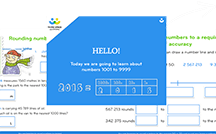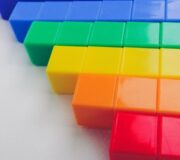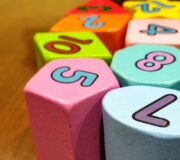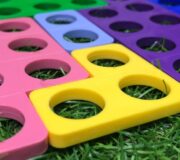Teaching Place Value In Year 5 And Year 6 Interventions: How To Identify and Fix The Most Common Gaps
Do you want to know how to teach Year 5 place value and Year 6 place value? If so, you’ve come to the right place. This post is part of our maths interventions series which has been designed to help Year 5 and 6 teachers and SATs booster group leaders achieve age related expectations with pupils who need that extra intervention.
It’s particularly aimed at those running a maths intervention or a catch up numeracy programme in Year 5 or Year 6, but it is also relevant to your whole class teaching of place value lessons. The whole series supports a maths mastery approach, and the aim is to help you ensure each child is getting appropriate support and level of challenge.
For more on the mastery method, check out our maths mastery toolkit.
Structure of this Year 5 and Year 6 Place Value Intervention Plan
- First, you’ll diagnose where pupils are struggling with ‘the nuts and bolts’ of place value from the national curriculum.
- Next, you’ll track back to the different stages of understanding and examine what the misconception might be in detail.
- Finally, we’ll give you strategies that can be used with whole classes, booster groups or alongside 1-to-1 interventions to help when teaching place value KS2.
FREE Place Value Interventions Lessons Resource Pack Year 5/6
Plug gaps and help conquer common upper KS2 misconceptions in place value with this set of lessons taken from our expert interventions.
Download Free Now!We help you solve problems such as
- How to explain place value to pupils who may still not understand it
- Gaps in pupils’ mental maths knowledge
- Pupils not estimating or checking their results and therefore, getting a problem wrong
- Why pupils keep making mistakes with their carrying/exchanging
- What place value strategies pupils can implement
We provide place value strategies, tasks and activities for KS2 pupils at every level of understanding – everything you need to plan your KS2 place value lessons!
Before you start: Work out pupils’ key misconceptions with place value
From the below pupil profiles, you should find the best fit for those you are looking at in your class.
The techniques for how to teach place value will vary for each of the example pupils below, so take from the section you feel best fits the pupils in your class.
Third Space have two free resources that can help with this diagnosis:
- Free assessment: Year 6 Place Value Diagnostic Quiz
- Free assessment: Year 5 Place Value Diagnostic Quiz
We also have a series of place value worksheets, ranging from KS1 to KS2, to use with pupils once you have diagnosed their specific learning gaps.
Year 5 / Year 6 Place Value Emerging
Hamza is bubbly and always tries hard. He can identify digits in large numbers and add or subtract multiples of that digit well as long as they don’t cross the boundary into the next digit.
Hamza struggles when being asked to represent a number in multiple different ways or split the number up from its separate digits (e.g 4603 = 4000+600+3).
He can order numbers, although occasionally makes “silly errors”. He frequently makes slips in carrying/exchanging when calculating written methods.
Pupils like Hamza are EMERGING in their place value knowledge.
Year 5 / Year 6 Place Value Developing
Stuart is able to recall to the point where he doesn’t like to write anything down as he prefers to do everything in his head. However, this causes him to make unnecessary errors when crossing boundaries, similarly to Hamza.
When he is forced to use written methods, he makes errors as he has not secured using them – particularly with exchanging.
He doesn’t check his answers to make sure they are reasonable. Stuart much prefers calculations he can ‘see’ rather than using and applying contexts, where he struggles to know what to do.
Pupils like Stuart are DEVELOPING in their place value knowledge.
Year 5 / Year 6 Place Value Securing
Karen is surprisingly under-confident in Maths. She seems fairly able in most areas but makes seemingly random errors. This is often due to unsecured mental methods or errors relating to manipulating the digits she has in their representation.
For example, when calculating 406 + 397, she prefers a written method. When calculating mentally, she doesn’t see that she can exchange 3 ones from 406 to add to 397 to make her calculation 403 + 400.
Pupils like Karen are SECURING their place value knowledge.
Year 5 / Year 6 Place Value Pre-Booster
Tommy struggles with identifying which digit is a hundred, ten and one. He has difficulties when trying to add or subtract multiples of 10 to a number but can add/subtract a single ten including over the hundreds boundary.
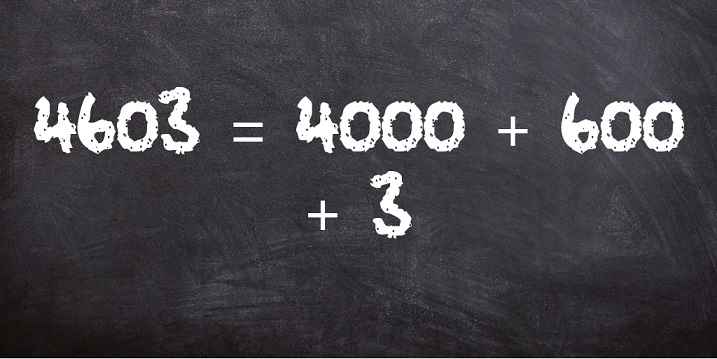
He can use concrete materials to support him exchanging and calculating written addition and subtraction but makes seemingly random errors that are difficult to pin-point. Using and applying contexts throw Tommy.
Pupils like Tommy are PRE-BOOSTER in their place value knowledge.
Tommy’s needs are beyond the scope of a booster group or this post. He needs specifically targeted 1:1 support from a professional tutor, such as that provided by Third Space Learning to catch him up to a point where booster intervention could be considered.
Teaching place value in Year 5 and Year 6 to pupils who are ‘EMERGING’
Start your place value lesson with bundles of straws. This may seem extreme but when pupils like Hamza are making errors with boundaries between ThHTU, or struggling to represent numbers in different ways, this can be a good teaching technique to help them improve their skills.
We need to ensure they have secure foundations to their understanding of place value, as it is likely a fundamental lack of understanding in this area is causing their errors and lack of progress.
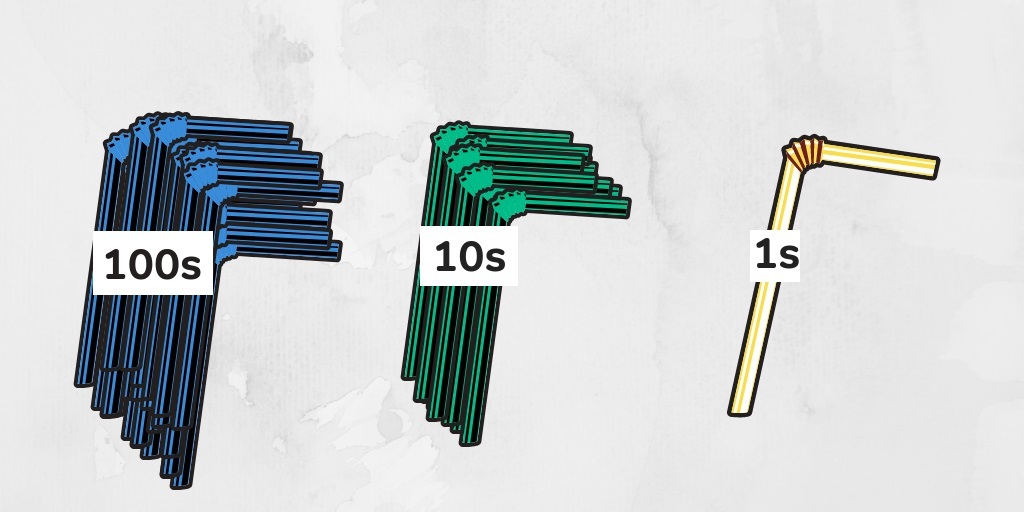
Establish the gaps in place value
- Have straws on their own (ones), bundles of ten (tens) and a few of bundles of a hundred (hundreds).
- Ask the pupils to make a number that you have written in front of them (e.g. 465) out of straws. Watch for any hesitation.
- Ask them others but without showing them the number in written form. This will check they truly understand the language, order and relative size abstractly. Pupils that struggle here are below the entry point for this booster.
- Assuming the pupils are able to do this, introduce zero as a place-holder, both written and only spoken, e.g. 503. Ensure the pupils are not representing the zero 3 or 5 tens (mixing their hundreds or ones).
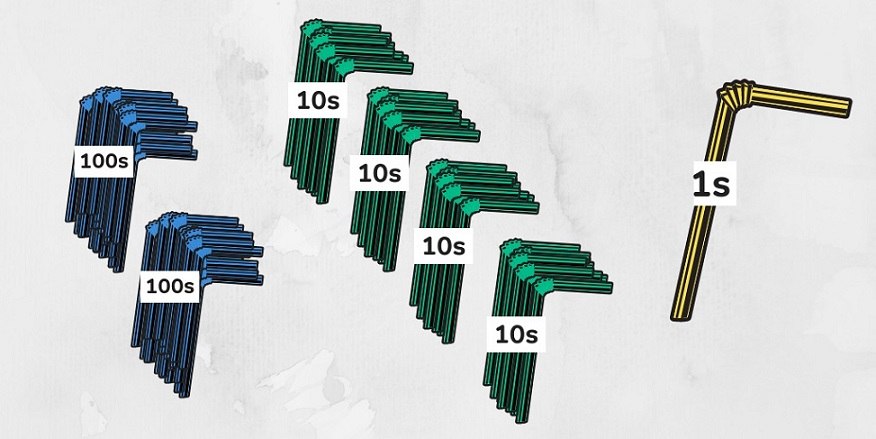
Teaching place value focusing on the gaps
- Initially with straws (even if just tens and ones) and then with base 10 equipment, ask the pupils to make and then write down numbers such as 241, representing each digit (241=200+40+1). This should not be a challenge.
- Then get the pupils to move a ten to their ones column. Ask them to re-write (241=200+30+11). Discuss with the pupils how it is possible to have the same number but have it represented in different ways, even with the tens in the ones column.
- Then build on this, asking the pupils to represent 241 in as many different ways as possible. This will allow you to assess who has a strong understanding and who doesn’t.
- Remove the concrete apparatus and see who can transfer their understanding to another number such as the 503 that has already been met. Using zero as a place holder should not be a barrier and will again establish pupils level of understanding (503=200+300+3).
- If the pupils struggle here, go back to using concrete apparatus and ask them to physically move their hundreds/tens/ones and recount to find the total until they fully understand they have the same number no matter how they represent the number.
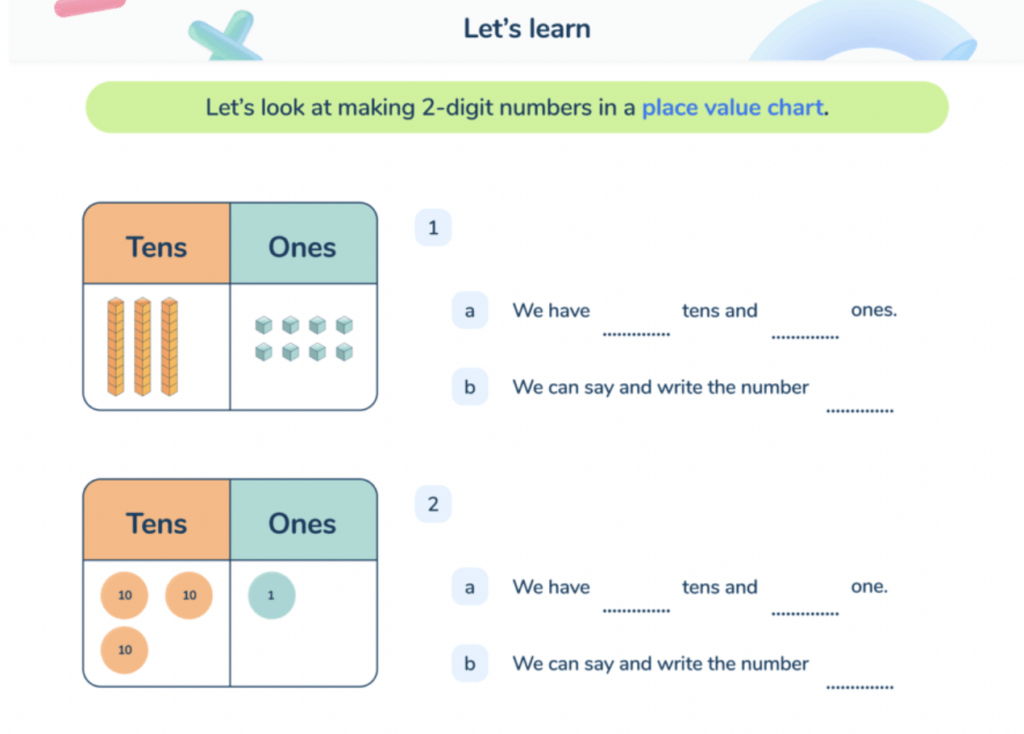
Securing knowledge in place value
The above activities will have supported the pupils in their understanding of the relative size of each digit and they are then ready to eliminate those mistakes made when ordering numbers.
- Initially give pupils ThHTU numbers to order such as 4301, 4103, 4031, 1413, 1431. Let the pupils try to order, smallest to largest, whilst you watch without explaining how.
- Identify who is able to move through the digits (starting with thousands) until finding a digit that is smallest (here they would identify in the tens that 1413 is smaller than 1431). Allow them to continue even if they are making errors. Watch for pupils who think 4103 is the largest as it is likely the ‘see’ the 3 ones as larger than the 1 ones in 4301 and 4031.
- Where the pupils are still making errors at this size of number, use base 10 equipment to support them making each number to compare them. Introduce the idea that they can check each digit in turn starting with the digit worth the greatest value (thousands in the example).
- Continue until the pupils are secure. Then skip straight to large numbers including millions. Ask the pupils what they will have to do differently here. The answer should be very, very little.
If the large number throws the pupils, they should just be shown to compare one digit at a time as they did with smaller numbers. If some pupils start to struggle without the base 10, any coloured counters could be used to represent each digit (e.g. millions = blue, hundred thousands = red etc).
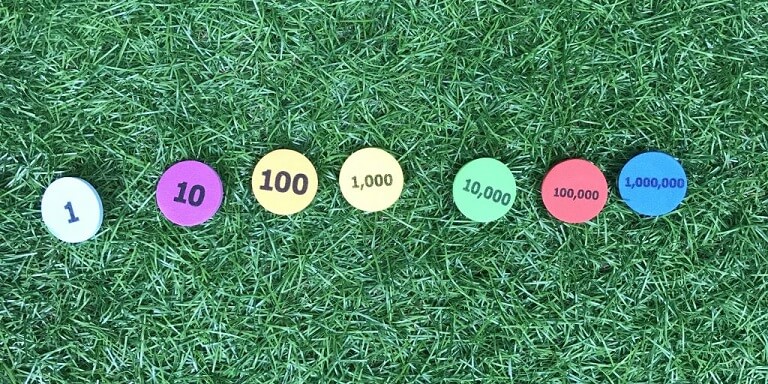
The pupils can then build using these and compare to consolidate their understanding of place value in maths.
When the pupils can confidently order large numbers and represent numbers in a range of ways, they are ready to move to the next stage of the booster – ‘DEVELOPING’.
Further reading
- Free resource: The Best Place Value Grid Ever: Your Printable Place Value Concertina For KS1 and KS2 (With Decimals!)
- Free resource: Place Value SATs Questions
- Blog: Place Value Games And Activities for KS1 and KS2
How to teach place value for pupils who are ‘DEVELOPING’
Begin your place value lesson with pupils like Hamza and Stuart, where they struggle; that is with manipulating across boundaries mentally: for example 5369+1265.
Guide the pupils through being mindful, looking for which mental method is most appropriate, as well as potential exchanging. The example most closely linked to place value understanding is partitioning.
The pupils should easily add 1000 to 5000 and 300 to 200. They should already have realised there would be exchanging in the tens because 6 tens + 6 tens = 10 or more tens.
Additionally, they should have seen there would also be exchanging in the ones. The focus here should be on the pupils realising they will have to adjust in the hundreds due to the exchanging in the ones and tens.
Building on understanding of place value
Explore this abstractly, at first, as the goal is for the pupils to access this understanding mentally. The mental process to model is:
- 5 + 1 thousands = 6 thousands
- 3 + 2 hundreds = 5 hundreds
- 6 + 6 tens = 12 tens
- Exchange 10 tens for 1 hundred making 6 hundreds and 2 tens
- 9 + 5 ones = 14 ones
- Exchange 10 ones for 1 ten making 3 tens and 4 ones
- 6 thousands, 6 hundreds, 3 tens, 4 ones
- 6634
It is likely that this is the level of complexity the pupils would struggle with due to the (double) exchanging. Some may prefer to do this with a written method:
Let pupils’ understanding lead your teaching
Let the stage the child is at (Spring term Year 6 compared to Autumn Year 5) guide you as to whether to pursue developing understanding of place value in the context of mental methods or allow them to refine and become increasingly fluent with the written methods.
Where you decide to continue with mental methods, bring out base 10 and, for bigger numbers, place value counters/coloured counters. Use this equipment to model the exchanging process.
Tackling written methods could be done before, during or after the mental methods depending on the needs of the pupils in the booster. For more details on mental or written methods using concrete resources, see our How To Teach Addition and How To Teach Subtraction posts.
Once the pupils are more confident with written and mental calculations that require them to have good foundations in place value, they can be given simple using and applying contexts in their place value lessons.
Include in this mixed sized numbers to check the depth of their place value understanding. For example: Using all these 7 digits once, make a 3 digit and 4 digit number. What is the largest and smallest totals you could make?
To develop pupils like Stuart’s ability in using and applying, they need to be able to pick the right methods. Much of the time, it is this choice that deters or confuses them.
Our blog post on how to teach the bar model method in KS1 & KS2 Maths might be a good place to start for addressing this issue. Once pupils are comfortable at this stage, it’s time to move on to the next step – ‘SECURING’.
How to teach place value for pupils who are ‘SECURING’
Pupils like Karen are very common – fairly able in written methods but lacking secure enough foundations with recall and place value to continue to develop their mental strategies.
Chances are that when teaching place value at KS2, you will meet a pupil just like Karen so this section is designed to help you secure their place value knowledge.
Developing fluency of place value in maths
A fluent written method is great and can enable these pupils to achieve. Developing their mental strategies so they are increasingly mindful (looking at the numbers in order to choose which strategy is best) will support both mental and written methods as it will enable them to make quick estimates as well as use the inverse to check their answers.
By using base ten and place value counters you can demonstrate to pupils when rounding and adjusting should be used; in your lesson, show them how close a number is to the next or previous hundred, for example:
- For 4396 + 441, pupils can see that 96 is near 100. They can represent the addition by moving 4 ones from 441 to 4396 to make 4400+437.
- When modelling this, watch for pupils who add the 4 hundreds in 437 to the 4 thousands in 4400. Their understanding of place value is hazy so go back to previous booster steps. Also watch and encourage pupils to estimate first.
- Taking our example, “4396 + 441… well that’s basically 4400 + 400, so my answer should be about 4800.” In other words, their mental strategies, particularly rounding, should be aiding their estimates.
Teaching place value at Year 5 And Year 6 isn’t one size fits all
In conclusion, where pupils make occasional errors, they either need to work on their understanding of place value that underpins the method they are using, or they need to work on developing a different strategy.
It depends on what will help that child with how much time or place value lessons you have left with them. But you can never go wrong with developing their security in place value.
There is no simple answer to the question “How do I teach place value at KS2?”, but hopefully the techniques above should help point you in the right direction.
Other articles in this ‘Year 5 and Year 6 maths interventions’ series
DO YOU HAVE STUDENTS WHO NEED MORE SUPPORT IN MATHS?
Every week Third Space Learning’s specialist school tutors support thousands of students across hundreds of schools with weekly online 1 to 1 maths lessons designed to plug gaps and boost progress.
Since 2013 these personalised one to one lessons have helped over 150,000 primary and secondary students become more confident, able mathematicians.
Learn how tutors build rapport or request a personalised quote for your school to speak to us about your school’s needs and how we can help.

